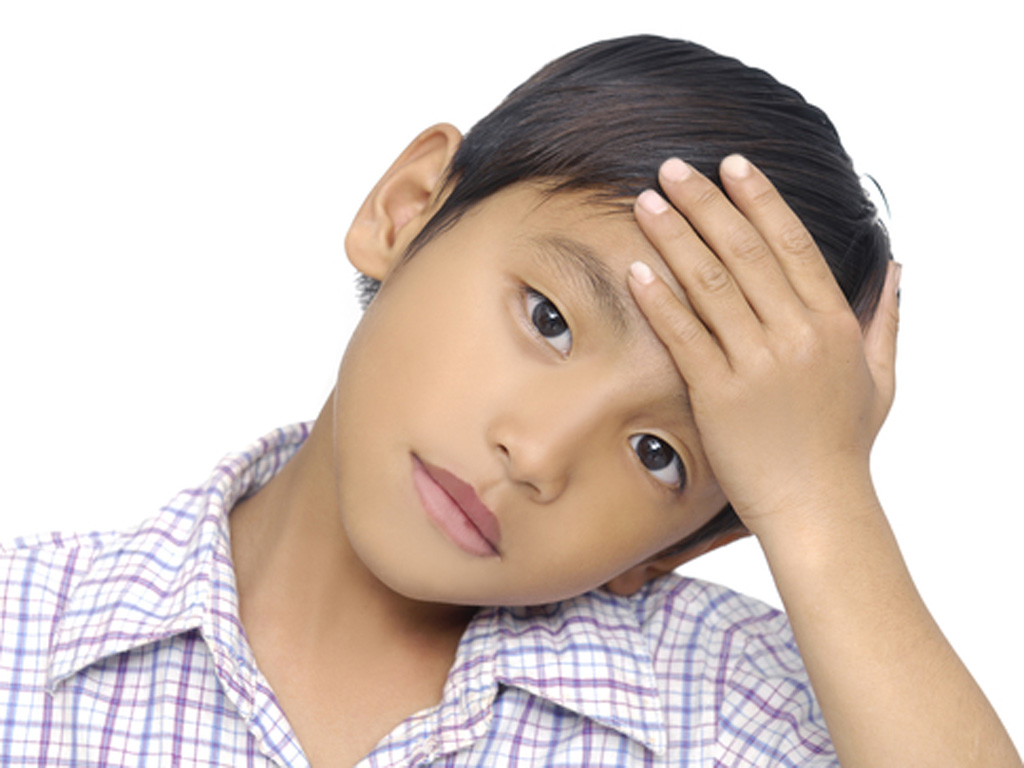Adults don’t know what to do when a child is going through pain. If your child is experiencing this, find out the symptoms of migraines in children to help them feel better, according to Fox News.
 Illustration: Shutterstock Illustration: Shutterstock |
How to identify early
About 10% of children aged 5-15 have migraines. Before puberty, boys and girls are equally likely to have migraines, but after puberty, girls are more affected due to the increase in estrogen levels. About 50% of girls will experience migraines a few days before or on the first day of their menstrual cycle.
Migraines have been found in newborns aged about 18 months. Although it is difficult to detect because infants cannot speak, if there is a family history or the parents/guardians experience migraines, the child may have early signs of migraines.
In addition, there are other signs to see if a child frequently complains of headaches, there is a high chance that they will have migraines when they grow up.
“The symptoms of migraine headaches in children are the early signs of migraines,” said Andrew D. Hershey, director of the Headache Center at Cincinnati Children’s Hospital Medical Center (M&M).
Furthermore, 2 other conditions such as motion sickness and migraines can cause natural pain avoidance or make the child focus more on the pain – Howard Jacobs, pediatrician, migraine specialist, and pediatric professor at Nationwide Children’s Hospital in Columbus, Ohio (M&M), said.
 In addition, children with tendencies towards motion sickness, sea sickness, etc. are also more likely to have migraines – Illustration: Shutterstock In addition, children with tendencies towards motion sickness, sea sickness, etc. are also more likely to have migraines – Illustration: Shutterstock
|
In addition, children with tendencies towards motion sickness, sea sickness, etc. are also more likely to have migraines.
Although migraines have a strong genetic connection, environmental factors such as eating irregularly or changing sleep patterns can also contribute to the severity of migraines, Hershey said.
The symptoms of migraines
Unlike common headaches that gradually progress from light to moderate, migraines progress from moderate to severe. Moreover, childhood migraines are different from migraines in adults. At the onset, children do not experience the prodromal phase but feel the pain on both sides of the head.
Children with migraines tend to be sensitive to light and sound, dizzy, nauseous, and may vomit. About 10-25% of patients will experience visual disturbances and see spots before the migraine occurs.
Some children in the pre-school age group have symptoms of migraines but do not experience migraines. It is an immature form of the headache that follows the pattern and usually goes away after a few hours or is accompanied by light sensitivity.
Another group of children has symptoms such as abdominal pain, usually no fever, diarrhea or migraines but no headache.
Prevention and treatment of migraines
Disease diagnosis: The first step is to take your child to the hospital to determine the exact cause of their migraines. The doctor may prescribe a medication, but it is important to understand the side effects before choosing it for your child.
Healthy diet: Eating a healthy diet includes fruits and vegetables, lean meats, healthy fats, and having three meals a day can help prevent hunger and prevent migraines.
In addition, make sure to give your child enough water to stay hydrated.
 Every child needs at least 20 minutes outdoors in the sun to receive the necessary vitamin D – Illustration: Shutterstock |
Exercise: Research shows that obesity is related to migraines, and one of the best ways to ensure your child has a healthy weight along with a healthy diet is exercise.
Furthermore, regular exercise will increase energy levels in the body’s cells and reduce stress over time, helping to prevent migraines. Therefore, let your child exercise for 30-45 minutes per session, 3-4 times a week.
Check for nutritional deficiencies: Some supplements like riboflavin or coenzyme Q10 (CoQ10) can help alleviate your child’s deficiencies. Magnesium can also prevent migraines, but you should consult a doctor.
Sleep: Getting enough sleep is also important for preventing migraines. According to the National Sleep Association (M&M), school-age children should sleep 9-11 hours per night, while teenagers (14 to 17 years old) should get 8-10 hours per night.

































